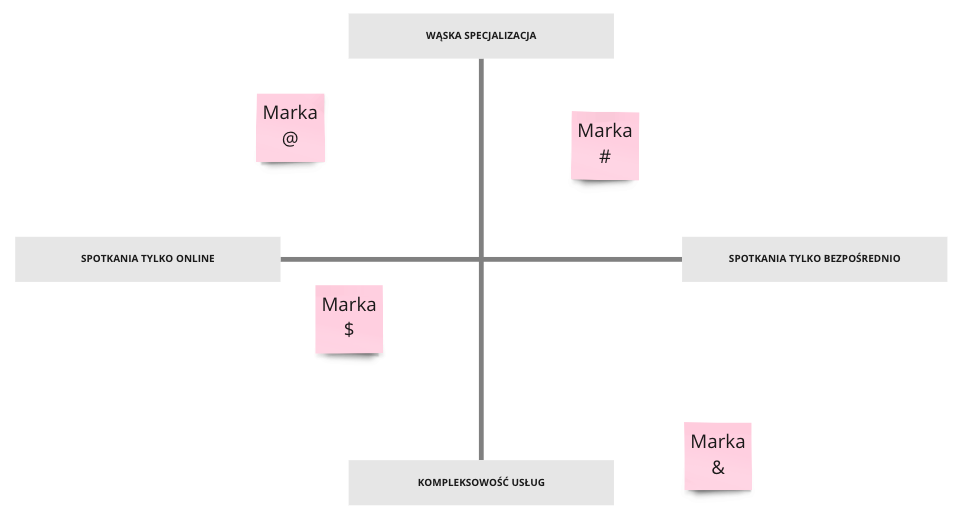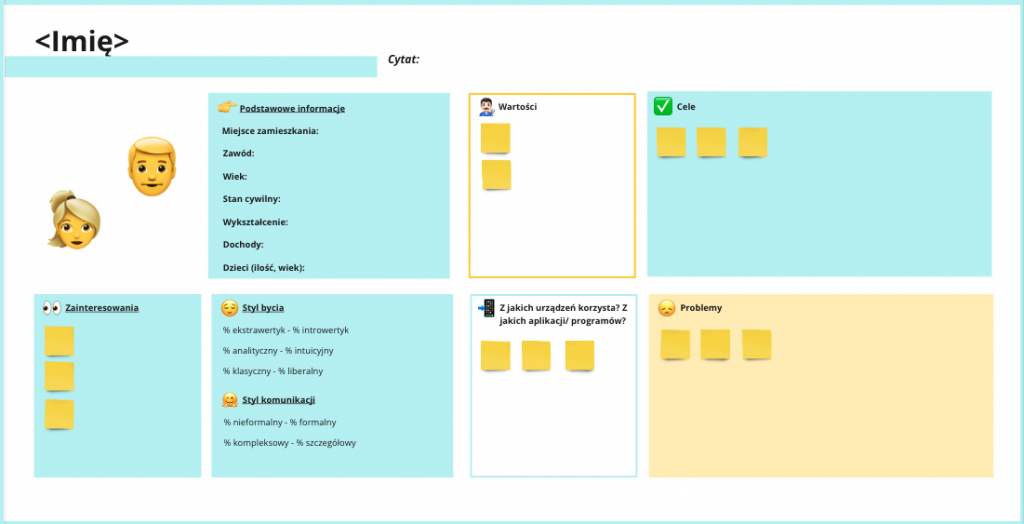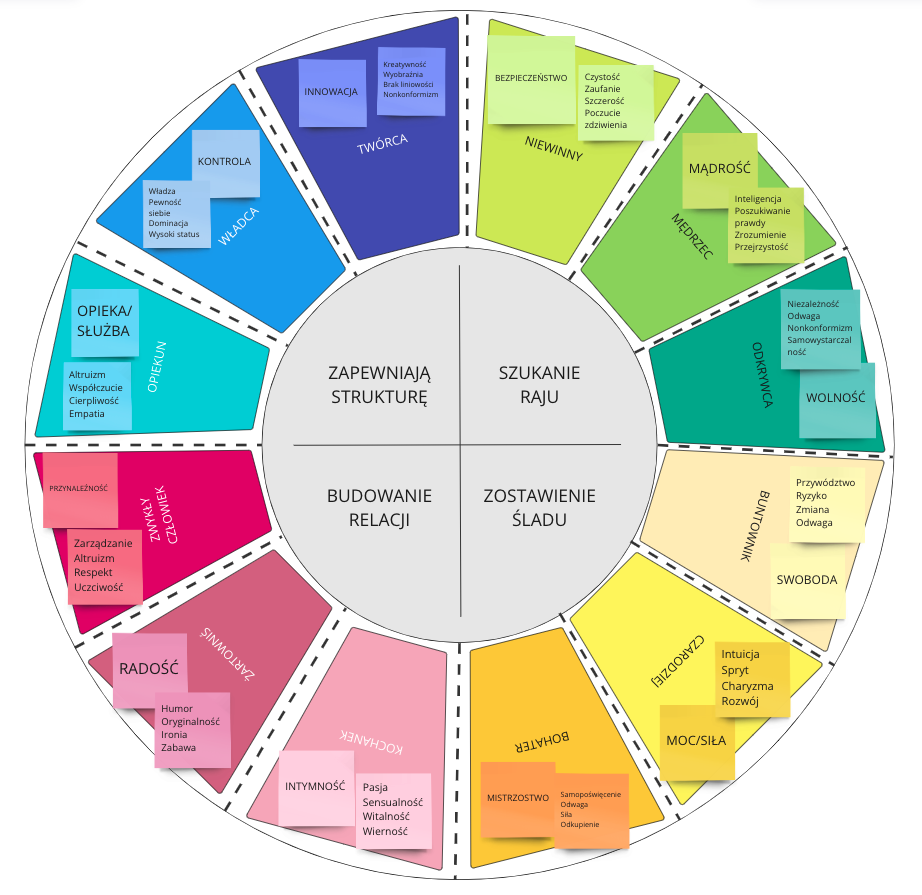Creating an effective marketing strategy is essential for any business that wants to gain a foothold in the market and attract customers. There are a number of tools and techniques that can be used to develop and implement one.
In this article, we’ll look at five select tools you can use to effectively build and promote your brand. By understanding and using them, you’ll create a strong and cohesive brand identity that resonates with your target audience.
Perception maps
A perception map is a graphical representation of how a brand is perceived in relation to its competitors. It is based on the assumption that consumers position products and services based on their attributes. This relationship can be represented on a two-dimensional graph.

The horizontal axis represents one attribute, while the vertical axis represents another. Brands, products, or services are plotted on the chart in appropriate locations based on how consumers perceive them on these two attributes.
Perceptual maps are used, among other things, to understand how analyzed brands are received by customers. They can also help you identify areas that need to be strengthened or differentiated. They are also a good tool for developing marketing strategies and making decisions about development and positioning.
Personas
A persona is a fictional character representing a specific type of customer for a given company. It is based on market research and real data obtained, for example, through desk research or in-depth interviews. Creating personas can help you understand your target audience and create marketing messages that resonate with them.
To create a persona, you need to gather as much information as possible about the audience you’re interested in. This can include demographics (age, gender, location, etc.), information about goals and motivations, and details about the pain points and challenges your audience faces. It’s also worth finding out details about how they prefer to receive information, what type of content they engage with, and how they make purchasing decisions.
After gathering information, you can create a detailed personality profile of the client. Include information such as name, surname, occupation, place of residence, interests, and values. An important part of creating such a "portrait" are goals, motivations, problems, and pain points. You can also include quotes that the person might say or think. If you see such a need, you don't have to limit yourself to one profile. Within one target group, you can even find several personalities that are worth characterizing.

Using personas helps you create more targeted and effective marketing campaigns because they help you better understand the needs and desires of your target audience.
Customer Journey Map
A customer journey map is a tool that helps you understand the different points of contact between a customer and your brand – from awareness of your existence to purchasing a product or using a service.
Such a map is prepared for each persona, which means that we can make more than one. There is no single template, because the information we include on it should represent the purchasing process in a given brand. However, we start at the moment when our recipient first comes into contact with our product or service. Then we map the various points of contact between the customer and the brand - from social media posts, through familiarization with the store website and interactions in the store.
Once we have created a map, we can use it to identify pain points or areas of confusion in the customer journey. It is a good tool for identifying opportunities to improve the customer experience and creating targeted marketing campaigns that meet the needs of their audience at each stage of their encounter with the brand.
Tone of Voice
Tone of Voice is a guideline for how a brand communicates. It defines its personality and the tone and language of the content it creates. Creating and implementing it ensures consistency across all communications to its audience.
To create a guideline for your “brand voice,” you need to identify the key characteristics and attributes that define your brand. This can include your brand tone (e.g., formal, casual, friendly), language (e.g., technical, colloquial), and personality (e.g., fun, serious, trustworthy). You can use archetypes to help you define your personality (you’ll learn more about them in the next section).
It is then worth creating a set of guidelines that define how these characteristics should be reflected in brand communication.
Once you’ve finished working on your Tone of Voice, be sure to share your communication policy document with all team members. Make sure it’s consistently followed in all customer communications. This will help you create a cohesive and consistent brand experience for your audience.
Brand Archetype
In marketing and communications, an archetype is a universally recognizable and relatable figure or symbol that represents a specific topic or idea. They are useful tools for creating meaningful and effective marketing campaigns because they tap into the collective unconscious and resonate with audiences on a deeper level.

By incorporating archetypes into your marketing campaigns, you can create messages that resonate with your audience and help them identify with your brand on a deeper level.
You can read more about this tool here.
In summary, developing a strong brand marketing strategy is essential for any business that wants to succeed in the marketplace. By using a range of tools and techniques, organizations can create a coherent and compelling brand identity that resonates with their target audience. In this article, we’ve explored five such tools: perception maps, personas, the Customer Journey Map, Tone of Voice, and archetypes. By understanding the benefits and capabilities of each of these tools, you can use them to effectively build and promote your brands.
Bibliography:
B. Michalska-Dominiak, P. Grocholiński, Design Thinking Guide – or How to Use Design Thinking in Business, Gliwice 2019.
B. Rudkin Ingle, Design Thinking for Entrepreneurs and Small Businesses. The Power of Design Thinking in Everyday Work, Gliwice 2015.
- Written by: Agnieszka Untimely
- Posted on: 11 Jan 2023
- Tags: brand archetypes, customer journey map, design thinking, perception maps, Personas, Strategy, tone of voice

